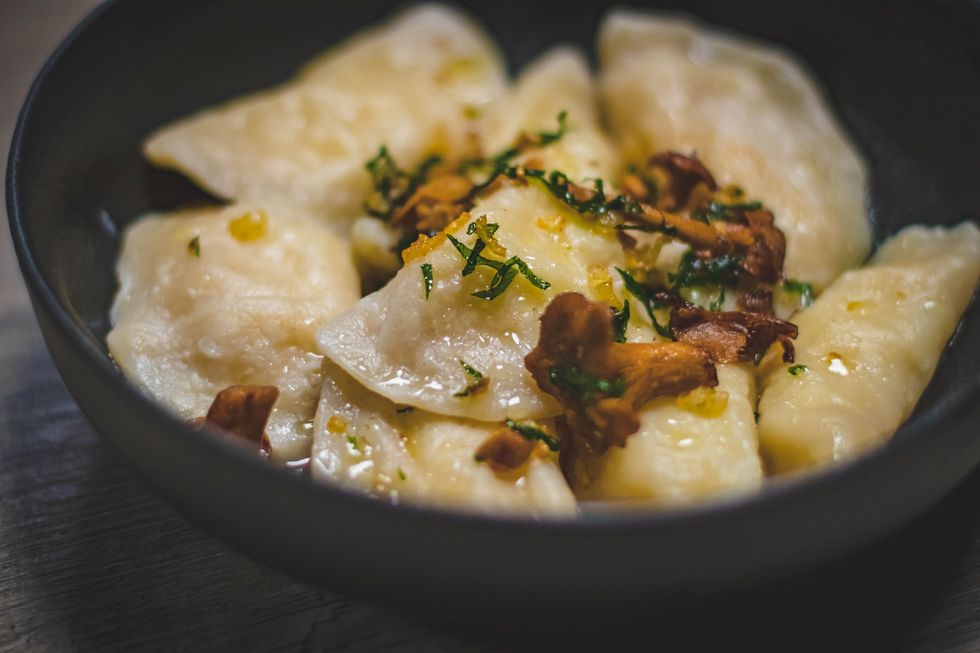It is often seen in the USA signs detailing “authentic” Chinese cuisine. From these three words alone, one can expect what the menu holds.
Appetizers will consist of steamed or pan-fried shrimp, pork, or chicken dumplings, maybe the classic Phoenix Roll, and the ubiquitous egg and spring rolls. The entrées will always include General Tso’s chicken, Wonton Noodle soup, Broccoli and Chicken, Four Seasons, and Peking Duck.
The restaurant will often claim that these are traditional dishes from Hong Kong, or a random compass direction and the name “China” at the end. I never really questioned this; I wouldn’t be shocked if these dishes were at least somewhat inaccurate, but I never quite realized how false the claim of authenticity was.
The dishes I mentioned have their own unique flavors but, when Chinese cuisine made its debut in California during the 1848 Gold Rush in San Francisco, Americans were quick to catch on. The immigrant entrepreneurs learned quickly that the 49ers had different tastes than what was popular back home.
Consequently, “American Chinese” food was born. Traditional Chinese cuisine puts a much heavier emphasis on leafy vegetables such as bok-choy and kai-lan, uses less soy sauce and much less sugar, does not utilize much (if at all) MSG, and rarely features uncooked vegetables. American Chinese food had to adapt to the Chinese Exclusion Act, utilizing ingredients found in California (like American broccoli, or sai-lan in Cantonese).
The American palate demanded blander, thicker, and sweeter food. In fact, New York’s Chinatown restaurants were known for having “phantom menus” that catered exclusively to the tastes of the ethnic Chinese population. These foods were considered too extreme in contrast to the American’s tastes, featuring liver and chicken feet among other dishes possibly offensive to Westerners.
Now, this isn’t an issue, per se. However, eating out in Chinese restaurants with this knowledge has made me enjoy the experience less. I find myself wishing that there were more options on every menu, that I could access these so-called phantom menus myself without having to learn a different language (or look differently, for that matter). I find that access to actual authentic
ingredients from the Asian continent is extraordinarily limited, as are recipes that aren’t simply “healthier” (see: blander) copies of American Chinese food. This isn’t to say that I don’t enjoy American Chinese food; on the contrary, it is my favorite type of ethnic food.
The reason I chose to contrast traditional Chinese cooking and American Chinese cooking is to use this lens to examine how people facing an entirely new way of life adapt. How they band together to preserve their culture, while simultaneously altering it to assimilate into a completely foreign culture.
For example, the changing of recipes due to the Chinese Exclusion Act to fit a Western and, more specifically, American palate is clearly assimilation. However, the preservation of traditional ethnic recipes serves a triple purpose: a way to unite the community so hated and feared by those endemic to the land, preserving culture (the glue which unites a people), and a remedy for homesickness.
After abuse and arduous work building a transcontinental railroad or operating a restaurant feeding those who dislike you, it is a comfort to eat the delicious foods of your home country. It is comforting to taste your home since you will probably not see it again and within its multitude of flavors lies what you left behind: your traditions, language, loved ones, friends, businesses, and memories.
It is not simply lamb noodle soup with pickled greens, it is your sick mother you were forced to leave behind to make a living. It is a bittersweet reminder of what you had and can never have again; a cup or a plate of nostalgia.
Every country has its own cuisine. Some are more famous than others, but no matter what popular opinion dictates, your food is yours. It is an effective and unavoidable (as it is a need that cannot be resisted) way to store memories and, according to the cuisine, it holds the things you grew up with.
Clothes, art, plants, even religion are not as unique as taste, smell, or language in their capacity to contain these sentimental treasures. A prayer brings images of your place of worship, but the smell of your favorite food brings a conglomeration of memories that bursts in your mind and distracts you so heavily for a time that, walking on the sidewalk, one is lucky they don’t walk into traffic.
One can only imagine these Chinese Americans making their livings in San Francisco, much of their community forced out by the Chinese Exclusion Act of 1882, and how profound and multiplied this feeling was. As if by some cosmic connection, they could reach out and touch their fellow expatriates to aid their integration and simultaneous preservation.
So, the senses of smell and taste, as well as language, are the prime ingredients in the glue of unity that must be present to help assimilation for a new group of people in a new environment, in a new place, and a new culture.

















